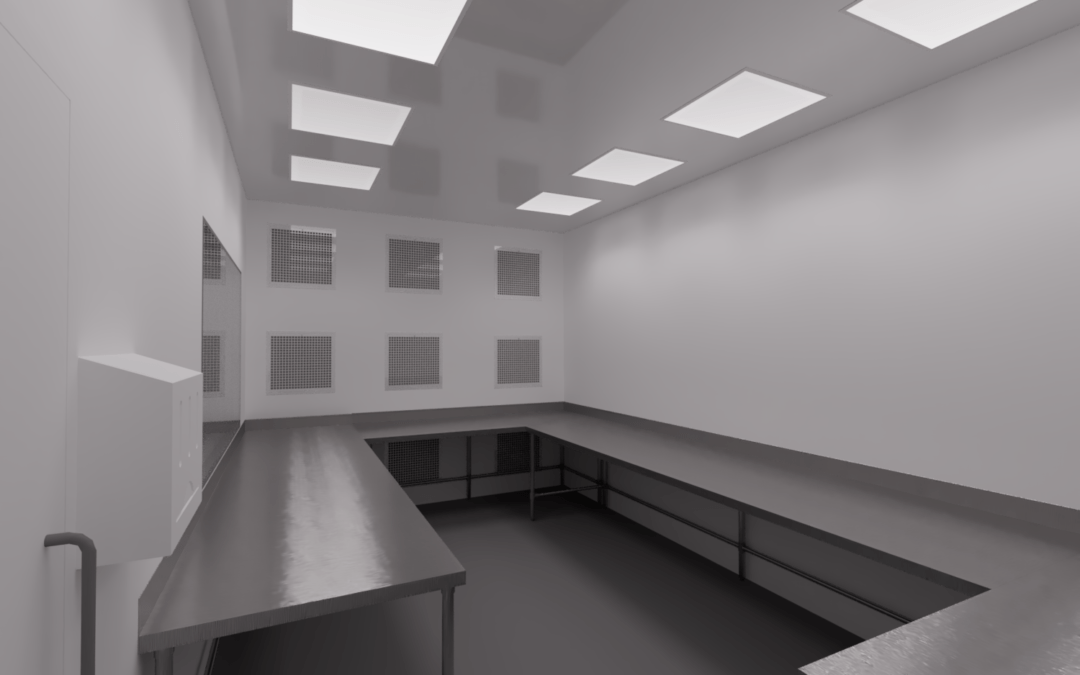Our recent blog post discussed HVAC systems that deliver low dewpoint air to create a dry room for battery manufacturing. But we can’t overlook the importance of an envelope system in a dehumidification system. A fully sealed panel system with well-sealed doors will insulate and protect a dry room from moisture ingress. The experts at Angstrom Technology can create a stable low dewpoint production environment to meet your requirements. In this blog post, we explain how.
DRY ROOM for battery manufacturing wall PANELS: ROBUST & FLUSH
A critical building envelope decision is the fabric of the panel finish, which must consider cleaning regimes, robustness, and surface resistivity. The latter is often most important within the battery, semiconductor, and microelectronics industries.
A flush cleanroom system eliminates trapping points, allowing for the best particulate control possible. Vision panels and doors should have flush integrations to avoid dead zones in air flows and trapping points for particulate.
STATIC DISSIPATIVE PANELS
Static dissipative plastics have a surface resistance that allows electrical charges to dissipate within milliseconds. The use of static dissipative materials will allow charges to flow to the ground in a slow and controlled way, preventing discharge to or from human contact.
ANTI-STATIC PANELS
Anti-static materials usually have a surface resistivity that inhibits the build-up of electric charges created when two materials rub together. Suppressing initial charges prevents the build-up of static electricity and provides a very slow rate of static charge decay from a hundredth to several seconds. This method can control building envelope charges in micro-electronic facilities.
PANEL CORE
Electrostatic discharge (ESD) can cause lithium to catch fire or micro-electronic components to fry, so battery dry rooms must be designed and built to ground charges safely. Panels with PIR or PU cores are highly insulative, so they can trigger ESD, making them inappropriate for these environments. Instead, panels with an aluminum honeycomb core and either anti-static or static dissipative facings will help manage the grounding of charges.
FIRE RISKS
Ultra-low humidity levels combined with highly combustible materials give battery dry rooms a high fire risk, which needs careful management. A low surface spread of flame tested to ASTM E84 is essential.
Whitepaper: Dry room design guide for lithium battery manufacturing
DOWNLOAD OUR HANDY GUIDE:

BATTERY DRY ROOM DESIGN & BUILD PROJECTS WITH ANGSTROM TECHNOLOGY
As Angstrom Technology are cleanroom specialists, our dry rooms can also achieve ISO classification. Not only that, but a dry room for battery manufacturing from Angstrom can also meet any applicable international engineering and building standards and regulations.
We’ve developed proven envelope solutions and reliable cleanroom HVAC designs for many applications. The Angstrom Technology group pride ourselves on our in-house expertise and capability to deliver over 100 cleanrooms annually across America, the UK, and Europe.
Tell us about your new dry room project!


